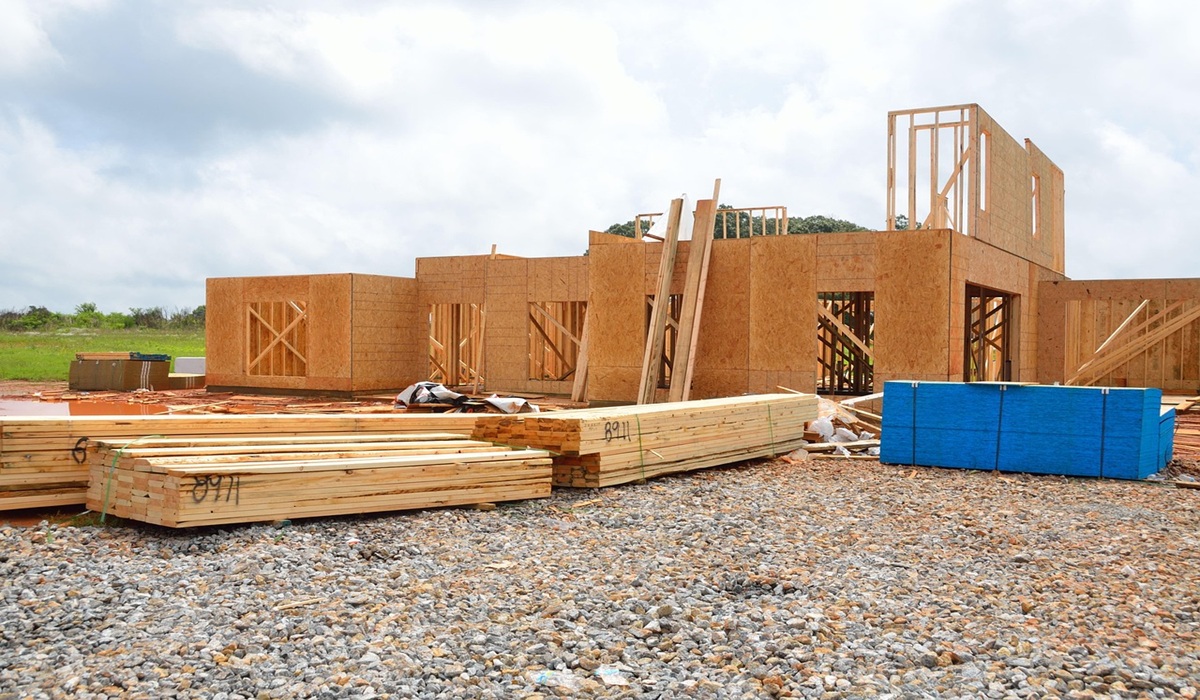Build Canada Homes: Promise or Pitfall in Housing Crisis?
- Don Woodstock
- Breaking News
- September 16, 2025

Image Credit: Paul Brennan
The federal government’s announcement of Build Canada Homes has been framed as a bold step forward in addressing the housing crisis, but when we stop and look closely at the details, questions begin to pile up. At the heart of this initiative is a staggering $13 billion in federal funding, with promises of accelerating housing construction, building affordable units, and making use of public lands. On the surface, it sounds ambitious, but dig deeper and the numbers raise eyebrows.
Consider the math. The government has indicated that six federal land sites will be prioritized with an initial plan for 4,000 factory-built homes. Divide the $13 billion by 4,000 and you end up with an astronomical figure—over $3.25 million per unit. Officials have floated the idea that the program could eventually scale up to 45,000 units, but even then the average comes out to $233,333 per unit. That is still alarmingly high given the federal government’s ability to build at scale, using modular construction in factories, with public land that they already own, and with supposed wholesale buying power. Why does this cost structure look more like luxury housing than affordable homes? Who is pocketing the difference?
To put this into perspective, the average cost of constructing a home in Manitoba—whether through ready-to-move (RTM) options or standard builds—can be kept under $300,000. In British Columbia, where costs are among the highest in the country, construction still averages under $1 million for new builds. These are market-driven numbers, not government-subsidized ones. So why are Canadians being told that it will cost billions more, per unit, when economies of scale, federal land ownership, and modular techniques should be driving costs down, not up?
This is where the murkiness of the plan becomes evident. There is no clear accounting for where the billions are flowing, who the developers will be, or what the ownership structure of these units will look like once they are built. Will they remain federally owned and leased at below-market rents? Will they be transferred to provinces and municipalities? Or will private developers, after receiving significant federal subsidies, ultimately control these units and profit from them? Without answers, optimism feels misplaced.
Even Winnipeg’s mayor, Scott Gillingham, and Manitoba’s housing minister, Bernadette Smith, have expressed enthusiasm about Build Canada Homes. But one has to wonder—what exactly are they enthusiastic about? Neither has been given concrete details about how many units will actually come to Manitoba or, more specifically, Winnipeg. We do not know when these homes will be delivered, and there is no explanation of the formula or criteria used to determine how many units each city receives. The federal government has said Winnipeg is one of the six initial sites, but without transparency, Manitobans have no way of knowing how many homes are coming, when families can expect to move in, or whether local needs and demographics were meaningfully considered.
Adding to the concern is the opaque process for choosing builders. The federal release mentions partnerships with private developers but provides no details on how those developers are selected. Will there be open tenders, competitive bidding, or merit-based evaluation? Or will appointments be made at the discretion of political or bureaucratic actors? Without clarity, the process invites questions about favoritism, cronyism, and potential quid pro quo arrangements. If taxpayer billions are at stake, the public deserves a transparent, objective, and accountable selection process—not backroom deals or insider contracts.
The housing crisis is too severe for vague promises. Gillingham and Smith are supposed to be our conduits to the federal government, ensuring Winnipeggers and Manitobans know exactly what is happening with billions of taxpayer dollars. Instead, what the public is hearing is: trust us, everything will be fine. But blind trust is not leadership. Either they are being left out of the loop by Ottawa, or they know more than they are saying. And if it’s the latter, then why aren’t they telling us the real scoop? Transparency is not optional in a crisis—it is the bare minimum.
There is another piece missing from the conversation that deserves attention: the existing stock of vacant properties. Downtown Winnipeg, like many cities across the country, has numerous empty buildings that could be converted into housing. These properties already have the bones—plumbing, electricity, structural integrity—and many are sitting unused while the city struggles with homelessness and housing shortages. Retrofitting vacant buildings is not a silver bullet, but it is unquestionably a low-hanging fruit that Ottawa has chosen to ignore. For the $3.25 million it appears to be spending on a single modular home, the government could outright purchase some of the largest buildings downtown, retrofit them, and still have funds left to staff them and provide supportive housing services. Why pursue the most expensive route when cheaper, faster, and equally effective options are staring us in the face? And why aren’t our local leaders pressing this point relentlessly on behalf of the people?
Supporters argue that Build Canada Homes will help create jobs, stimulate supply chains, and promote sustainable construction methods like mass timber. But again, the devil is in the details. Modular and mass timber construction should reduce costs, not inflate them. Federal buying power should secure wholesale prices on materials and labor, not retail or premium rates. So why are the numbers so out of line with industry norms? And if Canada is indeed developing a whole new housing industry with this program, how will accountability be enforced to ensure taxpayers aren’t being gouged along the way?
Beyond cost, the issue of affordability looms large. The government promises that Build Canada Homes will produce affordable and supportive housing, but what does “affordable” really mean in practice? In many cities, so-called affordable units end up priced at 80 percent of market rates, which is still out of reach for low-income Canadians. If units produced under this program come in at a quarter-million dollars apiece, who exactly will be able to live in them? Are they meant for middle-class buyers? Will they be subsidized rentals? Or will they quietly drift into market housing once the ribbon-cuttings are over?
The lack of detail extends to the program’s governance. Build Canada Homes is being led by CEO Ana Bailão, a former Toronto deputy mayor, who brings experience in housing policy. But even with her background, success will hinge on execution, transparency, and cooperation with provinces and municipalities. What safeguards are in place to prevent cost overruns, delays, or outright boondoggles? Canadians have seen major federal projects balloon in cost before, and housing cannot afford to become the next cautionary tale.
Another concern is time. Modular construction is supposed to be faster—reducing timelines by as much as 50 percent—but when will Canadians actually see the results? The housing crisis is immediate. Families are struggling today. Homeless encampments are growing in cities like Winnipeg, Toronto, and Vancouver. If Build Canada Homes takes years to deliver its first wave of units, how much difference will it make in the near term? And why has Ottawa not paired this long-term strategy with short-term interventions like retrofitting, leasing vacant units, or offering incentives to private landlords to keep rents affordable?
It is also worth asking what happens if costs continue to escalate. If $13 billion is only enough to produce 4,000 to 45,000 homes, depending on which figure one uses, what will the next phase cost? Another $20 billion? $30 billion? And how will this be paid for—through higher taxes, more borrowing, or cuts to other critical programs? Housing is a priority, but taxpayers deserve transparency about the true price tag.
At its core, Build Canada Homes could represent an opportunity. A coordinated national effort to tackle the housing crisis is overdue, and the federal government has both the resources and the authority to lead. But opportunity is not the same as achievement. Without clear answers, rigorous oversight, and a willingness to embrace multiple strategies—from new construction to retrofitting existing stock—the program risks becoming more about announcements than outcomes.
The stakes could not be higher. If $13 billion produces only a handful of homes at luxury-level construction costs, public trust will erode quickly. Canadians want solutions, not slogans. They want affordable roofs over their heads, not headlines about billions spent with little to show for it. And they deserve leaders who ask the tough questions before writing the cheques, not after.
For now, the federal government is asking Canadians to take Build Canada Homes on faith. But faith is not a housing policy. The math doesn’t add up, the ownership questions remain unanswered, the allocation of units to Manitoba and Winnipeg is unclear, delivery timelines are unknown, and cheaper, faster alternatives are being ignored. The selection process for builders remains opaque, leaving open the possibility for favoritism or political influence. If Ottawa is serious about solving the housing crisis, it must do more than throw money at modular factories and hope for the best. It must be transparent, pragmatic, and above all, accountable. And our local leaders—Mayor Gillingham and Minister Smith—must stop smiling for photo ops and start demanding answers. Their role is not to echo talking points but to protect the public interest and report back to Manitobans on the real details. Until they begin doing that, skepticism is not only reasonable—it is necessary.








